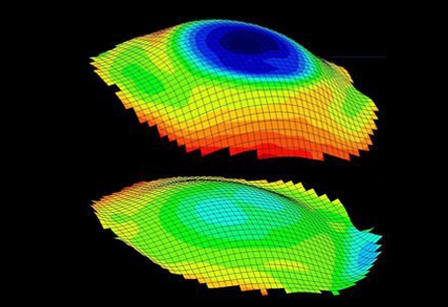
Myopia Control in Children through Refractive Therapy Gas Permeable Contact Lenses: Is it for Real?
Uncorrected Refreactive Errors are the world’s leading cause of visual impairment, with myopia estimated to be the leading form of refractive error worldwide. Nearly 30% of Americans and up to 85% of the East Asia population are affected by myopia. Instances of myopia in 19-year-old Korean males reached 96.54% in a recent study. The study also showed that myopia increased with education levels, indicating a positive correlation between myopia and educational achievement. Many efforts have been made to try to suppress and even reverse myopic development, including pharmaceutical, surgical, and corrective lens solutions.
The most successful of these treatments was the use of antimuscarinic medications, such as atropine, pirenzepine gel, and cyclopentolate. However, this approach led to adverse side effects of light sensitivity and blurred vision. The drugs required were not readily available to the patient, making the treatment costly and impractical. Orthokeratology, or the more current technique of corneal reshaping or refractive therapy, is a more effective strategy for addressing myopia up to -5 diopters (D) and astigmatism up to 1.5 D. It alters how light is refracted by reshaping the cornea into a flatter surface while slowing axial length elongation in younger patients. It is reversible, so if the patient is unhappy with the treatment, they can simply discontinue wearing the lenses.
To read more on this issue, click here.
